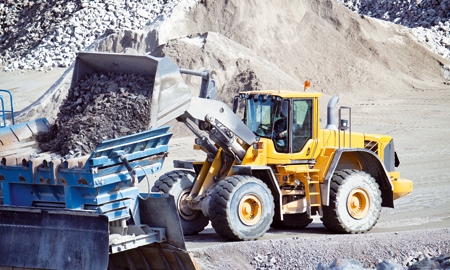Peru’s economy has been enjoying a period of solid growth for more than a decade, fueled in large part by investment in mining and minerals and by investors’ discovery of untapped riches in its industrial sector.
With growth averaging around 6.4% per year, a trend that looks set to continue, the country’s GDP has more than tripled from $53.3 billion in 2000 to $176.7 billion in 2011.
This year, GDP is expected to reach $193.9 billion, and to hit $216.7 billion at the end of 2013. Real GDP growth of 6.9% in 2011 is predicted to be followed by 6% this year and the next, placing Peru among the fastest-growing countries in Latin America. For 2014, the Central Bank expects to record a higher rate of 6.3%.
Mining and the refining of minerals are the country’s main industries. A member of the Extractive Industries Transparency Initiative (EITI), Peru is the sixth-largest producer of gold and copper, and the second largest producer of silver in the world. It also ranks highly in output of zinc and lead.
The country is also a significant producer of oil and gas. EITI reports that ongoing development of natural gas and condensates in the Camisea basin is boosting the extractive sector’s contribution to Peru’s economy and to the government revenues.
| An extensive array of industries are prime for investors’ attentions, including agriculture, mining, minerals, petroleum, steel, metal fabrication, fishing, cement, glass, textiles, clothing, food processing, beer and soft drinks |
Both governmental and private entities have invested heavily in developing the energy, transport and communications infrastructure, as Peru has sought the attention of foreign investors worldwide to help bring out its full industrial potential.
The country has deliberately been shifting toward developing available technologies and manufacturing more value-added products, making goods for the expanding domestic market – which has been bolstered by better wages and greater disposable incomes – as well as consumers overseas. Greater internal demand has strengthened the links between manufacturing, commerce and services, and added to the industry sector’s steady growth.
Peru’s industrial sector is the second-largest contributor to GDP, accounting for 38% of the total in 2011. It follows the services sector, which led the way with 54%, but is ahead of agriculture at 8%. Peruvian industry is also a major source of employment, hiring almost 24% of the national labor force.
A look into the country’s economic interests reveals an extensive array of industries that are prime for investors’ attention. They include mining and refining of minerals, petroleum extraction and refining and natural gas and natural gas liquefaction. In addition, the country offers opportunities in steel, metal fabrication, fishing and fish processing, cement, glass, textiles, clothing, food processing, beer and soft drinks, rubber, machinery, electrical machinery, chemicals and furniture.
Peru’s booming construction sector is currently the main driver of industry’s contributions to its growth. Construction expanded 21.5% year on year (yoy) in July 2012, partly a reflection of various major infrastructure projects under way. The financial sector, which expanded 13% yoy in July, followed the construction sector’s leading position and is gaining momentum from a continued growth in private-sector credit.
Manufacturing showed a sharp increase in activity mid-2012, accelerating from 1.3% yoy in June to 4.8% in July, and mining activity also showed solid yoy growth of 4.2%, according to the Economist Intelligence Unit.
Numerous free trade agreements (FTAs) in recent years have provided Peru with a boost to national production. Over the past three years, it has entered into accords with countries including the U.S., Canada, Chile, Singapore, China and South Korea. The FTAs eliminate tariffs and remove barriers to services, provide a secure, predictable legal framework for investors, and strengthen protection for intellectual property, workers, and the environment.
Some 96% of 418 new products that have been exported to the U.S. since the FTA came into effect on February 1, 2009, are classified as non-traditional, meaning that they belong to emerging export industries. The three most prominent sectors that have been sending goods to the U.S. are metalworking (with 36% of the total), chemicals (20%) and textiles (11%).
Tourism has been a new growth industry in Peru since the early 1990s. However, the industrial sectors now showing the greatest promise for future growth are agriculture, textiles, metal mechanics, food industry, agricultural industry, manufacturing, chemicals, pharmaceuticals, machinery and services.
Peru has ambitions to become a major petrochemicals producer. Although petroleum is regarded as a source of energy, its ability to enhance the productivity of the manufacturing sector as a whole has yet to be explored in great depth. An array of projects are in the pipeline over the coming years to create Pacific coast South America’s only major petrochemicals production center.

0 COMMENTS